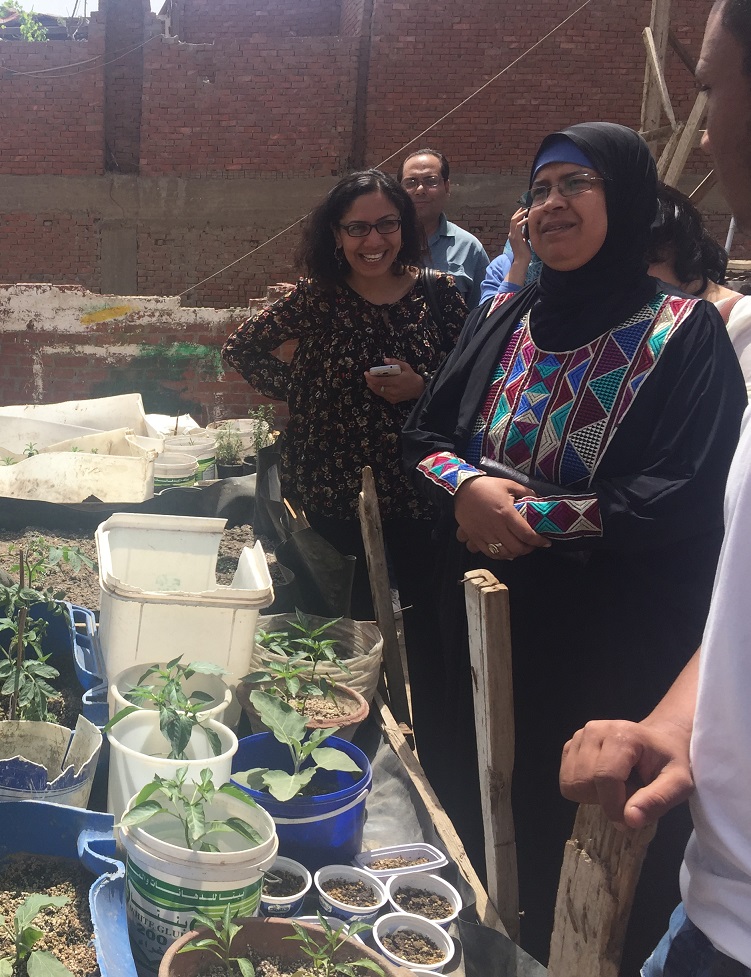

The project established two Rooftop Farming Hubs, a community-based social business model locally embedded to support a rooftop farming ecosystem and grow a community of practice in the field of urban agriculture. This is based on the study of different markets, produce, farming techniques, marketing plans, as well as a co-financing arrangements between the community and the RTF Hubs in the two targeted areas. The aim is not just educating and training the local residents of the targeted areas about RTF, but also creating a platform through which the residents can collaborate, exchange experiences, network, form support and learn how to sustain and expand their income generating urban agriculture projects.
As a technical hub, beneficiaries are equipped with the necessary skills and tools to establish and maintain their rooftop farms sensitive to socio-economic conditions and provide on-going technical knowledge and assistance.
As a social hub, linkages between targeted beneficiaries are enhanced to exchange knowledge about RTF, consolidate learning experiences, as well as support positive interaction and community cohesion
As an economic hub, access to local markets is facilitated through a market plan that aims to market through awareness raising on organic urban farming.
Readiness of a local NGO or institution to host a RTF Hub as one of its core functions. The "Hub Enablers" have received extensive training on technical and practical rooftop farming skills, TOT, project management, marketing, feasibility, and awarness raising. They were then trained on the job through the recruitment of community beneficaries who joined the rooftop farmers network, the installation of their rooftop farms, support throughout the farming seasons, and support in market linkages.
- Remote monitoring should be applied through the implementation process to help address any issues arising with the growth of plants.
- Creating incentive activities for the beneficiaries would give an advantage to the success of the project to encourage higher interaction from the beneficiaries’ side;
- Nets should be installed to protect the crops from external attacks from birds and flying insects;
- More focus on trouble shooting problems during cultivation should be made during trainings.